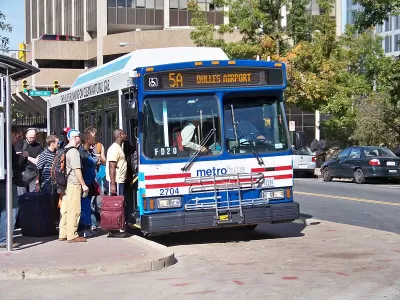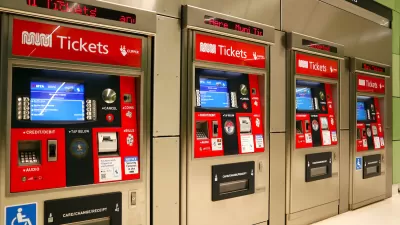Pitting Washington, D.C.’s K Street Transitway against free transit oversimplifies a more complex issue.

A proposal to provide free transit service in lieu of a new multimodal transitway in Washington, D.C. sparked heated debate among transit advocates, but now the District’s transit users may not get either one, writes George Kevin Jordan in Streetsblog USA.
“In late April, two members of the D.C. Council grabbed headlines when they proposed scrapping the multimodal, $123-million K Street Transitway project — a long-fought road redesign which would prioritize bus service by featuring two separated bus lanes between 12th Street NW to 21st Street NW, among other multimodal improvements — and re-allocate its funding towards an initiative called Metro for D.C., allowing people to board a bus within District limits for free, no matter the final destination.”
Now, a request from Washington Metropolitan Area Transit Authority (WMATA) board Chair Paul Smedberg to delay the free transit program prompts questions as to whether any transit improvements will be made at all. Jordan points out that the service-vs.-free fares debate misses the point, pointing out that it isn’t a question of a simple tradeoff.
Rather, each initiative comes with its own set of challenges and associated opportunities: “Under the surface of the debate are budgetary concerns for both the city and the WMATA, design concerns about the Transitway that some say would undermine its multimodal goals,” while the legislation that would fund the free fares program would also increase transit service. For now, “With D.C.’s budget still to be voted on, the future of both K-Street and Metro for D.C. seem to be up in the air.”
FULL STORY: D.C.’s ‘Free Fares Vs. Good Service’ Debate Isn’t What You Think

Alabama: Trump Terminates Settlements for Black Communities Harmed By Raw Sewage
Trump deemed the landmark civil rights agreement “illegal DEI and environmental justice policy.”

Planetizen Federal Action Tracker
A weekly monitor of how Trump’s orders and actions are impacting planners and planning in America.

The 120 Year Old Tiny Home Villages That Sheltered San Francisco’s Earthquake Refugees
More than a century ago, San Francisco mobilized to house thousands of residents displaced by the 1906 earthquake. Could their strategy offer a model for the present?

In Both Crashes and Crime, Public Transportation is Far Safer than Driving
Contrary to popular assumptions, public transportation has far lower crash and crime rates than automobile travel. For safer communities, improve and encourage transit travel.

Report: Zoning Reforms Should Complement Nashville’s Ambitious Transit Plan
Without reform, restrictive zoning codes will limit the impact of the city’s planned transit expansion and could exclude some of the residents who depend on transit the most.

Judge Orders Release of Frozen IRA, IIJA Funding
The decision is a victory for environmental groups who charged that freezing funds for critical infrastructure and disaster response programs caused “real and irreparable harm” to communities.
Urban Design for Planners 1: Software Tools
This six-course series explores essential urban design concepts using open source software and equips planners with the tools they need to participate fully in the urban design process.
Planning for Universal Design
Learn the tools for implementing Universal Design in planning regulations.
Clanton & Associates, Inc.
Jessamine County Fiscal Court
Institute for Housing and Urban Development Studies (IHS)
City of Grandview
Harvard GSD Executive Education
Toledo-Lucas County Plan Commissions
Salt Lake City
NYU Wagner Graduate School of Public Service





























